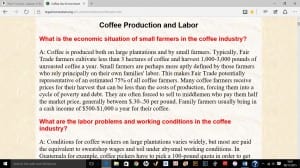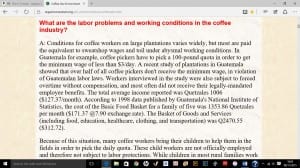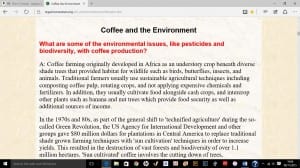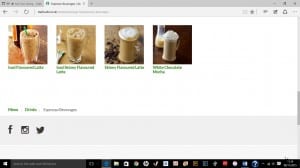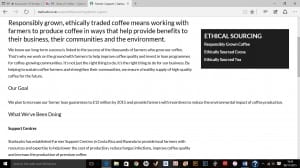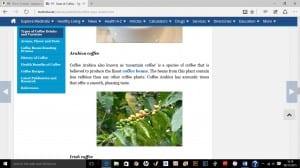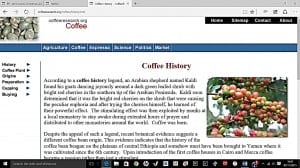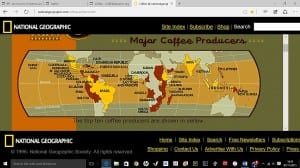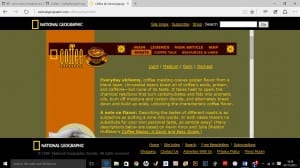A Few Facts
- There were 16,501 coffee shops across the country by the end of last year.
- Britain’s coffee shop sector remains one of the most successful in the UK economy and will continue to expand.
- “Rather, the way in which coffee is being consumed has changed with people now visiting coffee shops where they might previously have consumed instant coffee at home or in the workplace.”
- “Think of the coffee shop as a social venue,” he says. “What we have seen is the coffee shop market has grown at about 5pc per annum throughout the recession even in the most economically challenged parts of the UK. We think the reasons behind that are to do with things like the growth of female independence, female spending power. Over half of our customers are women.
- “People talk about the pub as a meeting point but pubs were more about males and the evening, coffee shops are [open] all day, more female [orientated] and certainly more family.”
- http://www.telegraph.co.uk/finance/newsbysector/retailandconsumer/leisure/11084328/Why-coffee-shops-are-replacing-pubs-in-Britain.html
Coffee is the most popular drink worldwide with over 400 billion cups consumed each year.
Last year in Britain, £730 million was spent on coffee.
It is estimated that more than 100 million Americans drink a total of 350 million cups of coffee a day.
Coffee represents three-quarters of all the caffeine consumed in the USA.
Britain consumes 500g of coffee per person, per year.
Selection of drinks available at Starbucks
The Stokes Coffee Journey
Stokes Tea and Coffee all began in 1892 when one fine gentleman, Mr Robert William Stokes, moved to our glorious city of Lincoln. Four generations, more than a century, and many a brew later, we’re still going strong.
Robert Stokes takes the reins of the grocer’s business and begins to indulge in his love for the finest teas and coffees
1960’s – David Peel, Robert’s grandson, invents our Blue Mountain Blend which is still our most popular and best loved coffee today. Spiffing job David.
2002 – To celebrate our Centenary, our staff dressed in period costume and served traditional fare at 1902 prices
2010 – Stokes extends and opens a café on the ground floor, offering lighter refreshments in the form of snacks and cakes whilst the hungrier shoppers can still enjoy the dining rooms upstairs.
2011 – The Stokes of Lincoln team open up a new café in the heart of the Collection Museum, a bright, modern place where hungry customers can enjoy crêpes, mimosas and live musicians.
Coffee Passion
A cup of coffee is the end of a long journey, from the land, to the farmer to the roaster, to your eagerly waiting hands. Each step is important in defining what the coffee will taste like. Come with us and we will take you through our most important processes and the care we take to make you the perfect latte, espresso or cappuccino.
Research into Topic
- Several international experts summed up coffee’s swings in much the same way: “We have long periods of low prices, short periods of high ones. When highs occur, farmers rush in to plant. Once the tree begins bearing, it churns out beans without too much effort for the 12 to 30 years of its normal life. Overproduction follows; prices fall. Farmers tear up their plants and put in more stable crops. A disruption in coffee supplies starts the cycle all over again.”
- Producers and consumers agree that the only sensible solution is to limit output to what the market can absorb, plus a standby reserve, and sell at prices reasonable to both sides. But what’s reasonable?
- Since 1963, 24 import and 44 export countries have cooperated through their London-based International Coffee Organization to stabilize the situation. By imposing a quota system, they can limit the outflow of beans from producing nations in times of oversupply. These controls, in force to sustain prices only until the market does so normally, have been applied twice: from 1963 to 1973 and again in October 1980.
- I managed to figure out that the world’s annual bean production could make 3,644,000,000 cubic feet [1,112,000,000 cubic meters] of liquid coffee, a volume equal to the Mississippi’s outflow for an hour and a half. But I have yet to figure out how to brew that perfect cup.
- Each year coffee is harvested during the dry season when the coffee cherries are bright red, glossy, and firm
